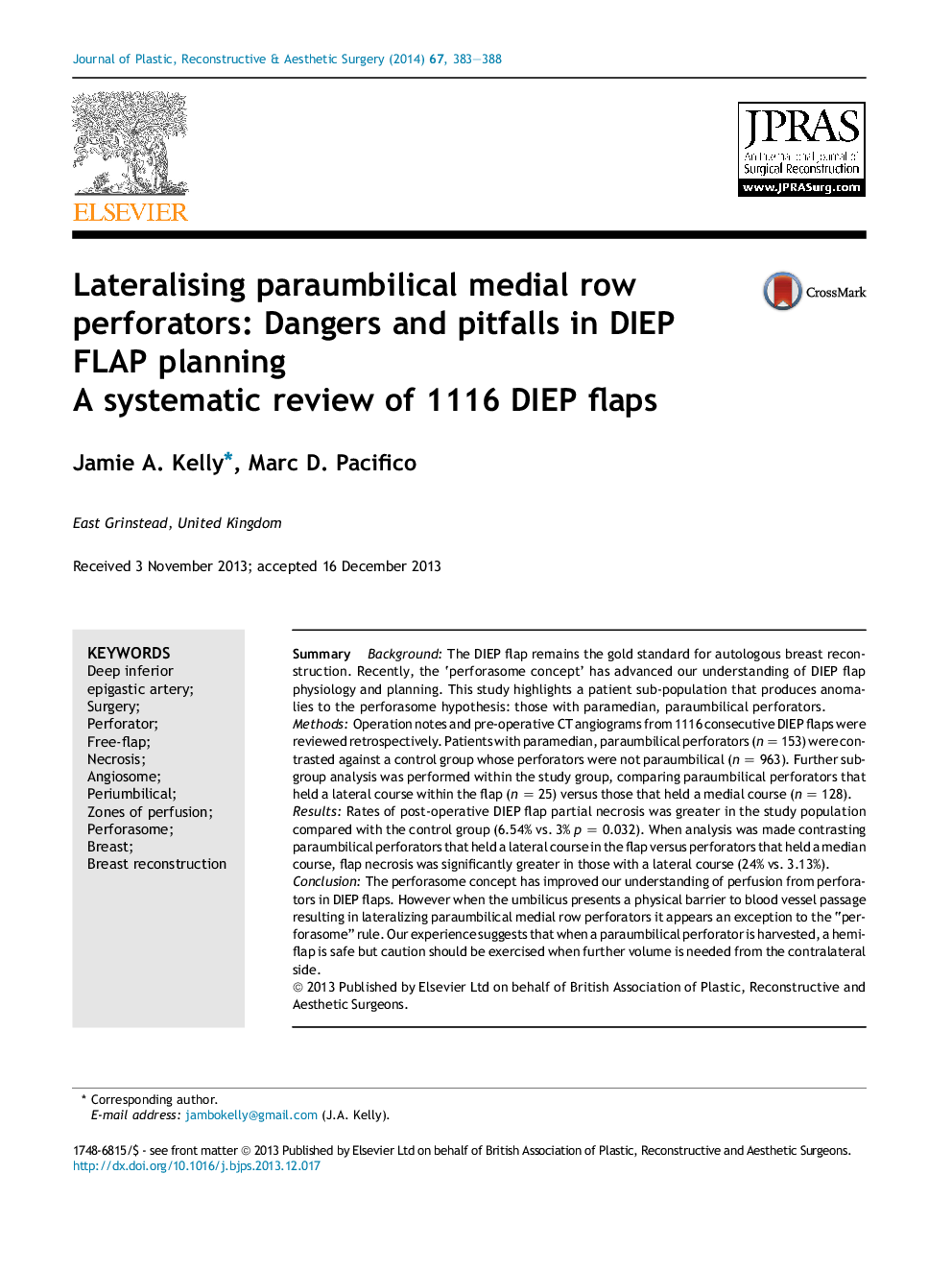| Article ID | Journal | Published Year | Pages | File Type |
|---|---|---|---|---|
| 4118007 | Journal of Plastic, Reconstructive & Aesthetic Surgery | 2014 | 6 Pages |
SummaryBackgroundThe DIEP flap remains the gold standard for autologous breast reconstruction. Recently, the ‘perforasome concept’ has advanced our understanding of DIEP flap physiology and planning. This study highlights a patient sub-population that produces anomalies to the perforasome hypothesis: those with paramedian, paraumbilical perforators.MethodsOperation notes and pre-operative CT angiograms from 1116 consecutive DIEP flaps were reviewed retrospectively. Patients with paramedian, paraumbilical perforators (n = 153) were contrasted against a control group whose perforators were not paraumbilical (n = 963). Further sub-group analysis was performed within the study group, comparing paraumbilical perforators that held a lateral course within the flap (n = 25) versus those that held a medial course (n = 128).ResultsRates of post-operative DIEP flap partial necrosis was greater in the study population compared with the control group (6.54% vs. 3% p = 0.032). When analysis was made contrasting paraumbilical perforators that held a lateral course in the flap versus perforators that held a median course, flap necrosis was significantly greater in those with a lateral course (24% vs. 3.13%).ConclusionThe perforasome concept has improved our understanding of perfusion from perforators in DIEP flaps. However when the umbilicus presents a physical barrier to blood vessel passage resulting in lateralizing paraumbilical medial row perforators it appears an exception to the “perforasome” rule. Our experience suggests that when a paraumbilical perforator is harvested, a hemi-flap is safe but caution should be exercised when further volume is needed from the contralateral side.
